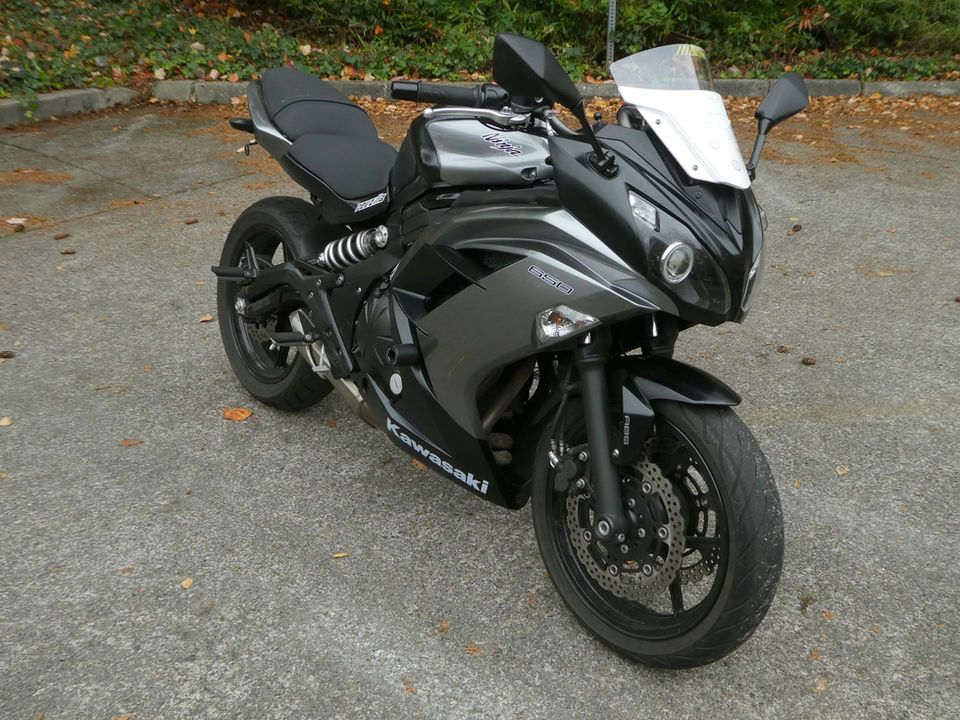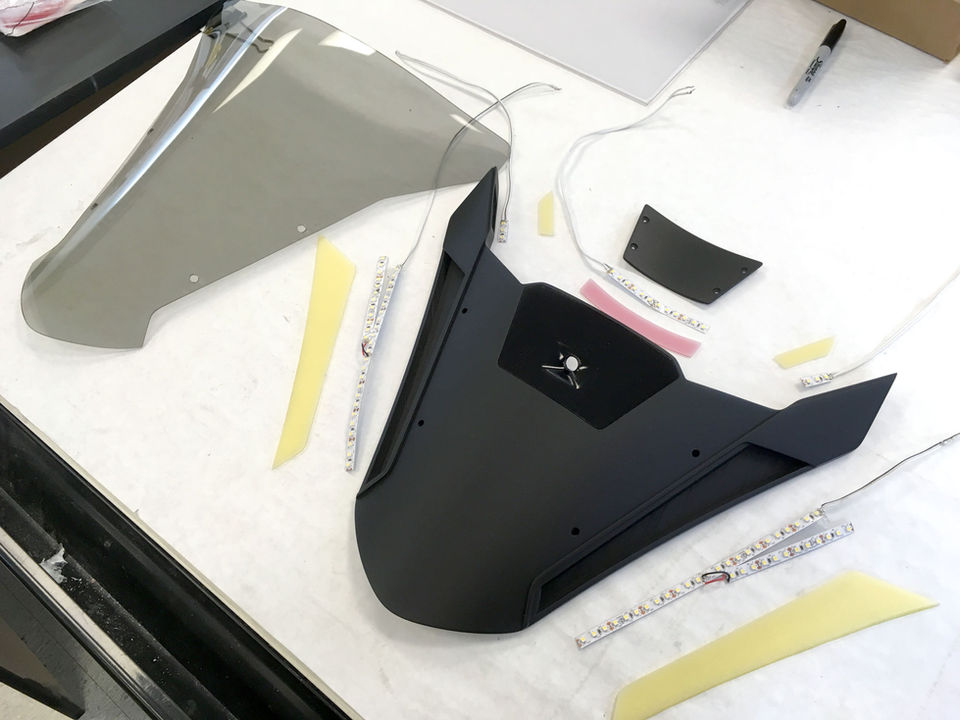top of page
SOLO PROJECT
WESTERN WASHINGTON UNIVERSITY
BELLINGHAM, WA USA
SixthSense is an exploration in applying the latest transportation safety technologies into motorcycles. This project is my senior thesis from WWU and started with an open ended prompt: act like an entrepreneur and design something that matters. The concept is an augmented motorcycle windscreen embedded with 3 main safety features to protect riders.
Artificial Intelligence meets motorcycle safety.
OVERVIEW

Forward hazard recognition.
This is your extra set of eyes on the road. Using a forward facing high definition camera paired with an object recognition processor, threats can be detected based off of their position and velocity relative to yours. These threat warnings are communicated to the rider with an alert that directs their attention forward allowing more time to react. One second can be all it takes to turn a deadly accident into a close call.

Blind spot detection.
It's been on cars since 2007 - why not motorcycles? Knowing whether or not the lanes next to you are clear, without shoulder checking, can give you more time to react and avoid forward hazard. It also prepares you for otherwise unexpected overtakings. The blind spot detection and forward hazard recognition systems work in tandem to give the rider an improved 360˚ situational awareness.

Conspicuity lighting.
The simplest and perhaps most important safety feature. 3 out of 4 motorcycle accidents are caused by other drivers violating the riders right-of-way. This is due to a few psychological reasons - most drivers are trained to watch for larger moving objects such as cars and trucks, not motorcycles. The small profile of a motorcycle also makes it harder to evaluate speed. Oncoming motorcycles appear to be traveling slower than oncoming cars traveling at the same speed, which causes some drivers to make lane-crossing turns when they shouldn't have. Adding high-visibility lighting that is positioned closer to eye level makes riders more noticeable to motorists who may not see them.

Why motorcycle safety?
Motorcycling is an inherently dangerous form of transportation. As a rider, I wanted to develop a concept that could make motorcycle travel safer and be scaled to all types of riders.
-
Motorcyclists are 29X more likely to die per mile traveled than car drivers.
-
75% of motorcycle accidents are caused by other motorists violating the riders right-of-way.
-
88,000 motorcyclists are injured each year.
The scary statistics:

Starting the project.
To uncover a solution that could actually help motorcyclists, the project started at ground zero - discovering why they crash in the first place.
Research strategy.
For each crash scenario, I listed potential solutions that could mitigate the accident. For each solution, I listed the current and emerging technologies that could be applied. What resulted was a hit chart of the specific solutions that would cover the greatest number of crash scenarios, and the technologies to make them a reality.

Overlaying each technology on a bike - where it could effectively function - helped funnel the scope of the concept towards the front of the motorcycle. It was at this point where the augmented windscreen idea surfaced, which had just enough technological validity and a realistic amount of design and development for a solo project.


Form development.
The form was developed under a number of different constraints: approximate sizes of components, bracket mounting locations, geometry of the motorcycle, and visibility to the rider. Sketches were done on a wide variety of motorcycles to direct the design towards a more universal look. Ultimately the product was designed to fit on a Kawasaki Ninja, one of the more common bikes on the market and one that I had available for testing.

Sketch modeling.
The mounting system and product-to-bike fitment is crucial, so sketches were quickly turned into full scale sketch models. This allowed for accurate analysis of proportions, attachment, and user interface. At this stage the sketch models were shown to riders for a round of feedback on size, placement, and interface.
< SCROLL >
Technology validation.
3 main technologies were designed into the product and explored concurrently with form development.
Hazard recognition.
The first challenge was proving object detection for the hazard alert system. After turning my MacBook into an image recognition processor, I was able to run images through a program that recognized objects based on a neural network. This came at the cost of having to completely reformat the computer twice, but it worked.
Blind spot sensor.
Developing a blind spot indicator was more simple with off the shelf components. The setup was an Arduino Uno programmed to detect objects within a certain range using a sonar sensor.
Lighting & indicators.
Lighting was straightforward - picking the most compact LED strip lights with the highest LED density and output. Diffusion was achieved with a light diffusion-specific acrylic backed with a color transparency.
< SCROLL >
Model build.
Creating a realistic appearance was important to make the concept believable. This included everything down to the proper fasteners and wiring connections to the motorcycle.
The appearance model started in CAD. The base was 3D printed out of ABS, sanded, primed and painted. Light diffusion panels were laser cut and sculpted to the geometries of the model. LED strips were wired and soldered for each of the hazard indicators and front lights. The camera was installed into the electronics housing, the area which simulated the location for other components like the object recognition processor. The windscreen itself was made out of polycarbonate - it started as sheet material that was trimmed to shape and drape formed onto a mold in my home oven.
< SCROLL >
The result.
A complete concept for an augmented safety windscreen that bolts directly onto the existing motorcycle bracketry. It is my hope that this concept will find its way into the motorcycling industry and serve its purpose - to stop accidents and save lives.

bottom of page














